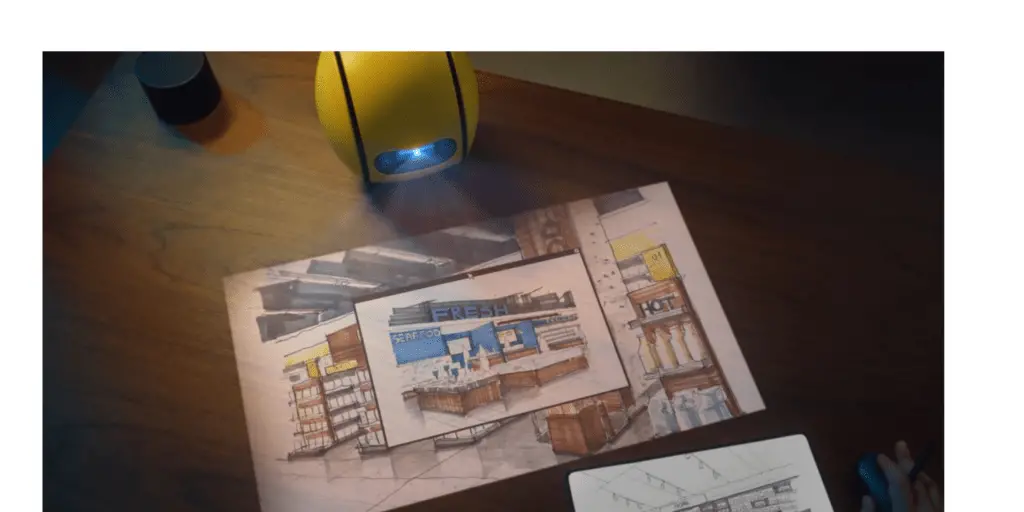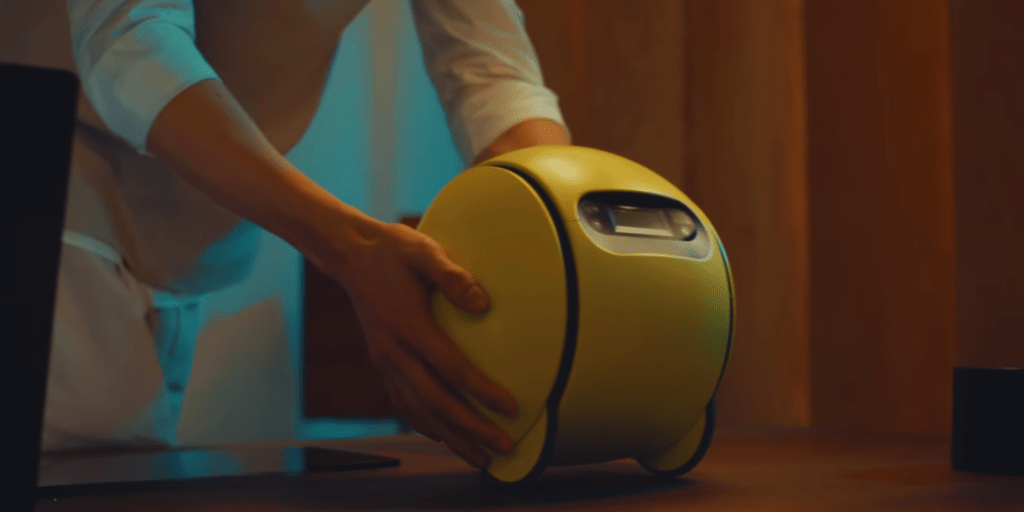Samsung intrigued the tech world with Ballie, a unique home robot that captured imaginations at CES with its futuristic, Star Wars-sequel design.
Resembling a droid straight out of a sci-fi movie, Ballie was a charming spherical robot that could navigate homes autonomously, doubling as a smart speaker and a streaming camera. Fast forward to CES 2024, and Ballie has made a remarkable comeback, albeit with significant design and functional transformations.
The latest iteration, poised for market release within the year, represents a significant evolution from its prototype. Now resembling a bowling ball in size and mounted on three wheels, this new version of Ballie promises enhanced capabilities and practicality, aiming to solidify Samsung’s position in the emerging home robotics market.
With this latest development, Ballie is a testament to Samsung’s innovative spirit and a glimpse into the future of domestic robotics.
Evolution of Ballie
The evolution of Samsung’s “Ballie” reflects a journey of innovation and adaptation to practical home robotics. Initially introduced at CES 2020, the original Ballie was a captivating concept with its compact, spherical design reminiscent of a character from a Star Wars movie.
Small enough to be likened to a softball, this ball droid incorporated wheels into its spherical body, allowing it to move with agility and charm around the home environment. It was envisioned as a roving smart speaker and camera, blurring the lines between futuristic fantasy and real-world technology.
Ballie had undergone a significant transformation. The latest version departed from the pure ball droid concept to adopt a more practical design. Ballie’s new form resembles a robot vacuum in terms of locomotion, suggesting a shift towards functionality and stability.
This change in design also accompanied a considerable increase in size, with Ballie growing to the size of a bowling ball. This larger form factor not only altered its physical presence but also allowed for the incorporation of more robust technology, including a larger battery and a projector.
The core idea of Ballie remained intact. It still embodied Samsung’s vision of a helpful, interactive home robot. However, the design modifications indicated a move from a novelty item to a more practical, useful household robot capable of more complex tasks and interactions.
The evolution of Ballie is a testament to the dynamic nature of robotic design, where aesthetics meet functionality, and the dreams of today gradually morph into the practical solutions of tomorrow

Technical Specifications and Features
The 2024 version of Samsung’s Ballie, while retaining its distinctive spherical design, incorporates several advanced technical specifications and features, adapting to the practical needs of a home robot.
Unlike its predecessor, the new Ballie is not a pure ball droid; instead, it is a sphere mounted on three wheels, a design reminiscent of a robot vacuum, which enhances its mobility and stability within a home environment.
This change in design allowed Samsung to increase Ballie’s size to that of a bowling ball, facilitating a more substantial battery and making room for an integrated projector. The front of Ballie houses a sophisticated sensor system, with two cameras providing stereo vision and a central projector for display purposes.
The exact nature of the additional sensors remains undisclosed. Still, they likely contribute to advanced navigation capabilities, employing time-of-flight technology.
The robot also features a unique disc on its head, surrounded by a light ring, which can pop up, suggesting it might serve a specific function, such as housing a lidar system for better spatial awareness.
The full suite of Ballie’s capabilities extends beyond mere locomotion; it includes smart speaker-style voice commands, smart home control, remote camera access, person recognition, and versatile projector functionalities.
The projector can display content on various surfaces and supports high-definition visuals. However, its effective use is likely limited to dimly lit environments.
These features collectively point towards a highly interactive and multi-functional home robot designed to assist and integrate seamlessly into the modern smart home ecosystem.
Projected Features and Capabilities
The projected features and capabilities of the 2024 Ballie model showcase Samsung’s ambition to blend smart home technology with robotic innovation.
Equipped with smart-speaker-like voice commands, Ballie can interact seamlessly with users, responding to verbal instructions and integrating into the smart home network for various controls.
Its enhanced navigation system, potentially augmented by lidar technology, allows for sophisticated home mapping and autonomous movement. The dual-camera setup facilitates stereo vision and enables person recognition, adding a layer of personal interaction and security.
A key highlight is Ballie’s built-in projector, boasting a 1080p resolution. This feature transforms the robot into a mobile media centre capable of displaying videos, conducting video calls, and mirroring content from a Samsung Galaxy phone.
The versatility of the projector extends to practical uses, like facilitating mouse and keyboard work, possibly powered by a nearby PC or Samsung’s Dex technology.
The effectiveness of this projector is constrained by its environment, requiring dimly lit settings to deliver optimal performance. This limitation underscores the inherent challenges of incorporating projection technology in small-scale home robots.
Despite this, the range of capabilities that Ballie promises, from home surveillance to interactive entertainment and smart home management, positions it as a multifaceted companion, potentially changing the dynamics of everyday home life.

Market Comparison and Competition
In the nascent home robotics market, Samsung’s 2024 Ballie is a formidable contender, poised to compete with existing products like Amazon’s Astro robot.
This emerging market segment is characterized by innovative blends of mobility, interactivity, and smart home integration. Ballie, with its unique design and multipurpose capabilities, stands out, especially with its projector feature and advanced navigation technology.
Amazon’s Astro has carved out its niche, focusing on home monitoring and smart home connectivity, priced around $1,600. However, Astro’s general availability remains limited, indicating a market in its early stages of consumer adoption.
Therefore, Samsung’s Ballie competes not only on features and capabilities but also on market timing and consumer accessibility. The anticipated release of Ballie within the year signals Samsung’s commitment to not just participating in this market but potentially leading it.
The success of these robots will hinge not just on their technological prowess but also on their ability to seamlessly integrate into users’ daily lives, offering genuine utility and convenience.
The home robotics market is set for an interesting phase of growth and competition, with companies like Samsung and Amazon at the forefront, shaping consumer expectations and experiences in home automation and robotics.
Final Thoughts
Samsung’s 2024 iteration of Ballie represents a significant stride in home robotics, blending cutting-edge technology with practical home applications.
From a quirky concept to a more functional and robust device, Ballie exemplifies the dynamic progress in robotic design where aesthetics meet utility.
With its advanced navigation systems, interactive capabilities, and the unique addition of a built-in projector, Ballie is poised to redefine the role of robots in the domestic sphere.
As it enters the market, it faces competition from products like Amazon’s Astro. It challenges the conventional understanding of home robotics. Its success will depend on its ability to integrate seamlessly into homes, offering real value beyond novelty.
This release is more than just an addition to Samsung’s product line; it is a testament to the evolving relationship between humans and robots and a preview of the future of home automation.
Samsung’s Ballie, with its innovative features and capabilities, is set to carve a niche in the home robotics market, potentially changing how we interact with technology in our everyday lives.


